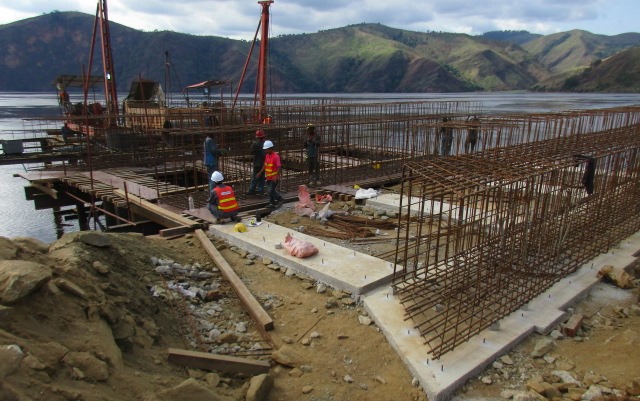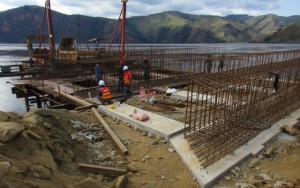

International Container Terminal Services, Inc (ICTSI) subsidiary Baltic Container Terminal (BCT) has completed its railway terminal modernization project in the Gdynia, Poland facility last December.
At the same time, ICTSI announced its new ICTSI DR Congo Terminal, located at Matadi on the Congo River, Democratic Republic of the Congo, is on schedule to open for business in August 2016.
The Congo terminal, a joint venture company between ICTSI, The Ledya Group and SCTP SA, will deliver purpose-designed container handling capacity coupled with modern general cargo handling and storage facilities.
Matadi is the chief sea port of the Democratic Republic of the Congo and the capital of the Kongo-Central province. It is situated on the left bank of the Congo River 148 km (92 miles) from the mouth and 8 km (5 miles) below the last navigable point before rapids make the river impassable. The port serves an extensive hinterland including the capital city of Kinshasa, the largest city in Central Africa.
The ICTSI DR Congo Terminal will initially commence operations in August 2016, with one berth. Full delivery of Phase One, incorporating a second berth and total quay line of 350m will be by November 2016.
Container-handling capacity will be 175,000 twenty-equivalent units per year with a nine-hectare terminal area incorporating a yard area of six hectares. Depth alongside the quay will be 12m at all times, offering the ability to serve Panamax, Handymax and Wafmax vessels.
As part of the overall development plan, ICTSI is investigating the impact and opportunities for dredging the river in steps from 7.3m to 9.1m, 11m and eventually possibly even 12m. With the material to be dredged mainly sand, there is considered to be real scope to achieve this and the delivery of wide economic benefits.
Handling operations along the 350m quay will be via heavy-duty mobile cranes with reach stackers in the yard area for container handling. The terminal operating system will be Navis N4, incorporating value-added functions such as integrated billing.
To date construction activity at the terminal site, which is located south west of Pont Marechal (before the bridge) and the existing public port, has seen completion of the access road, commencement of piling for the quay, and the start of works on the yard area and terminal building and gates.
“We are very pleased to be progressing this USD 100m investment on schedule in Matadi,” said Hans-Ole Madsen, ICTSI senior vice president for Europe, Middle East and Africa regions.
“The works are going well,” he added, “and we are very confident that we will be able to meet current and future cargo handling requirements for the Democratic Republic of the Congo in both the container and general cargo handling sectors.”
Based on demand, ICTSI has the option to immediately implement a Phase Two development providing an additional 350m of quay line and supporting yard area. “We are ready to undertake this,” emphasized Madsen, “as it is just a matter of timing in line with demand. We are very confident that we can build on the new efficiencies that Phase One will deliver including reduced vessel waiting time and reduced transit times for goods from point of origin to destination.”
Baltic facility
Meanwhile, BCT’s new rail facility can service up to 24 full container trains each day and has an annual capacity of 500,000 TEUs.
The BCT modernization project was carried out in partnership with the Port of Gdynia Authority and was backed by the European Union Cohesion Fund under the Operational Programme Infrastructure and Environment.
“This joint investment improves the competitiveness of our terminal and the port of Gdynia,” said Krzysztof Szymborski, BCT chief executive officer.
The Port of Gdynia Authority was responsible for the development and modernization of the terminal’s rail network and other related infrastructure. For its part, BCT acquired and installed two rail-mounted gantry cranes from Kocks Krane GmbH for handling of full container cranes. Each crane is capable of more than 30 moves per hour.
BCT plans to further improve the terminal’s train service by investing in electric traction to improve train maneuvering at the port.
Manila-based ICTSI operates 29 terminals in 20 countries.




